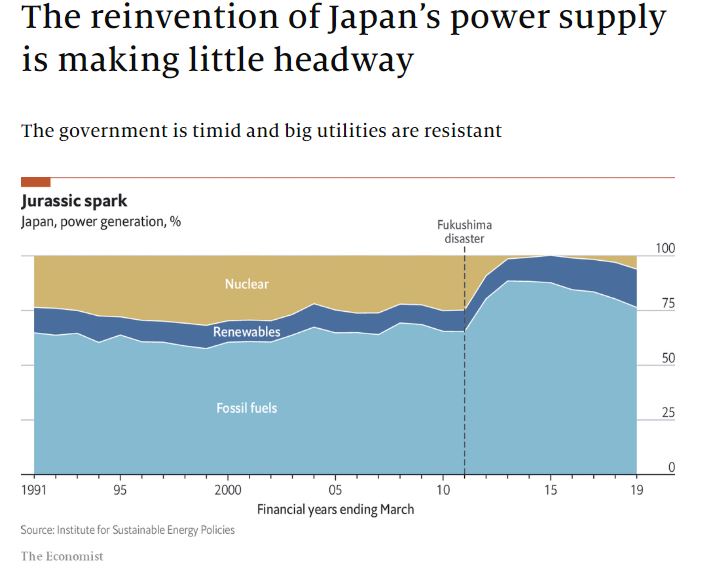Nuclear’s suddenly the answer to “Net Zero” — Japan wants to triple its nuclear power by 2030
It’s the third largest economy in the world, and a large but quiet vacuum of global fossil fuels. Right now it’s the second largest importer of gas in the world after China, and the third largest importer of coal (not that Extinction Rebellion seems to care).
Before the Fukushima disaster in 2011, nuclear power generation produced as much as 30% of Japan’s energy mix, but that’s now shrunk to just 6%. Japan has only six operating nuclear reactors left with a total capacity of six gigawatts, down from 54 before the Fukushima incident. Just a few days ago polls showed that that the fear and negativity of nuclear power in Japan has dramatically shifted in the last few months. One little war can change everything. Russia has suddenly given everyone permission to get serious about nuclear power.
Now the Japanese government wants to grow back from 6% to 20% nuclear in just 8 years.
Japan Sees Nuclear Energy As A Vital Piece Of Its Net-Zero Plan
OilPrice.com
Prior to the Fukushima disaster, nuclear power generation accounted for almost 30% of Japan’s energy mix.
Though some plants have resumed operation since then, nuclear energy currently accounts for only around 6.2% of Japan’s energy mix. To make up for the nuclear shortfall, Japan stepped up imports of natural gas; liquified natural gas (LNG) imports jumped 12,621 thousand tonnes between 2010 and 2011.
PM Kishida’s administration …aims to leverage Japan’s nuclear infrastructure to help achieve carbon neutrality by 2050, hoping to have nuclear energy take up between 20-22% of the energy mix by 2030.
The Economist in 2020 lamented that the energy transition was not transitioning
Half of those renewables in the graph are from hydropower:
The Japanese government tried to help renewables, but nuclear power was replaced with coal and gas:
IN THE WAKE of the Fukushima nuclear disaster in 2011, enthusiasm for renewable energy in Japan swelled. Kan Naoto, the prime minister at the time, declared that the country would draw up a new energy strategy “from scratch” and “elevate” renewables. One of his government’s last acts before losing power was to pass a law to stimulate renewable energy. Dozens of small firms sprang up. Fukushima prefecture itself pledged to get all its power from renewable sources by 2040.
The hoped-for transformation, however, has been slow. Renewable generation has grown from 10% of the power supply in 2010 to 17% in 2018, almost half of which comes from old hydropower schemes. Most nuclear plants, which provided more than a quarter of the country’s power before the disaster, have been shut down, at least for the time being. But for the most part they have been replaced not by wind turbines and solar panels but by power stations that burn coal and natural gas.
They’re all returning to nuclear power – Germany, France and the UK. When will Australia consider it?
